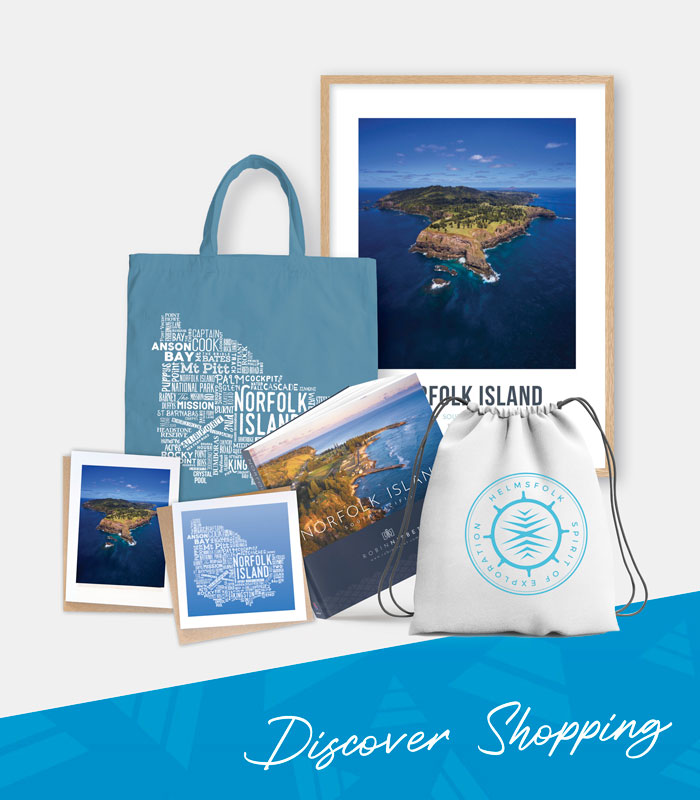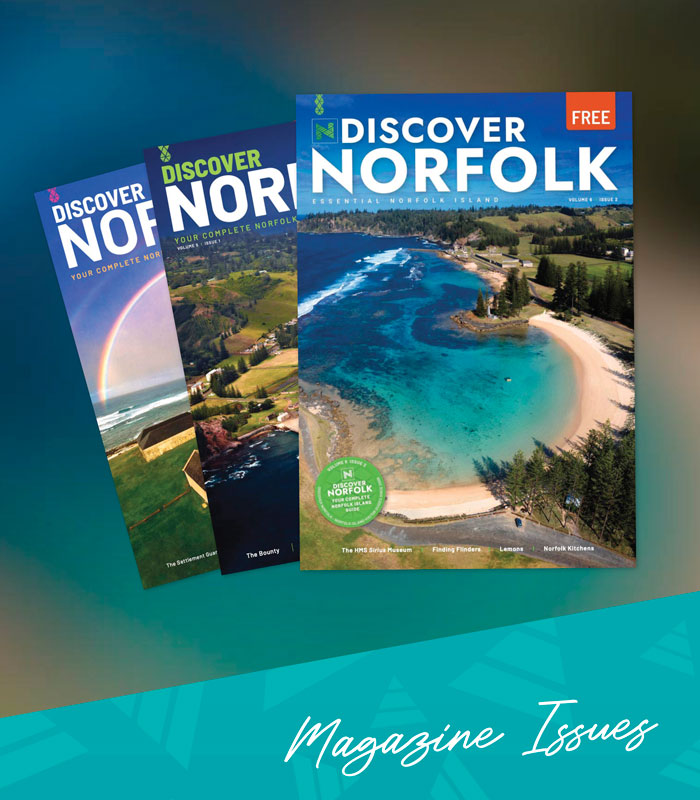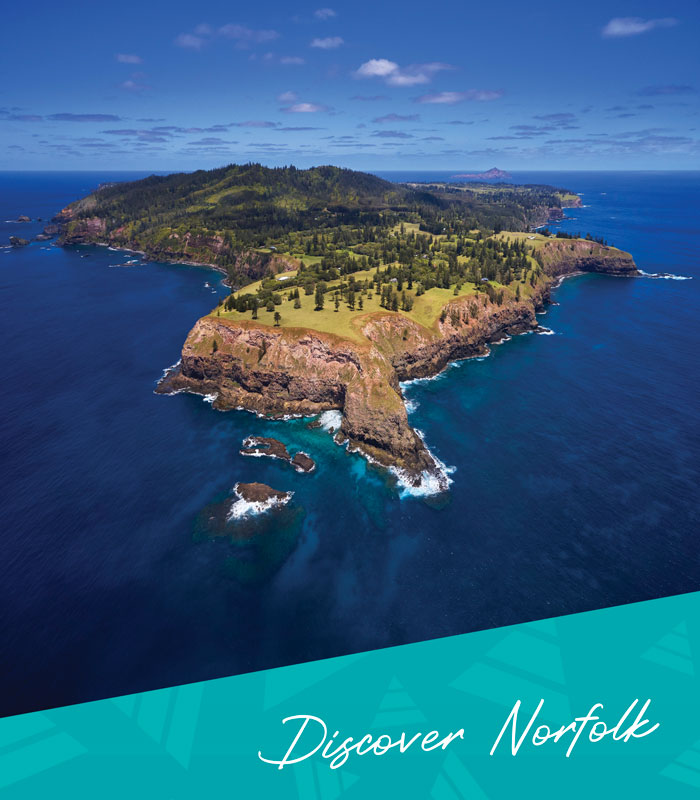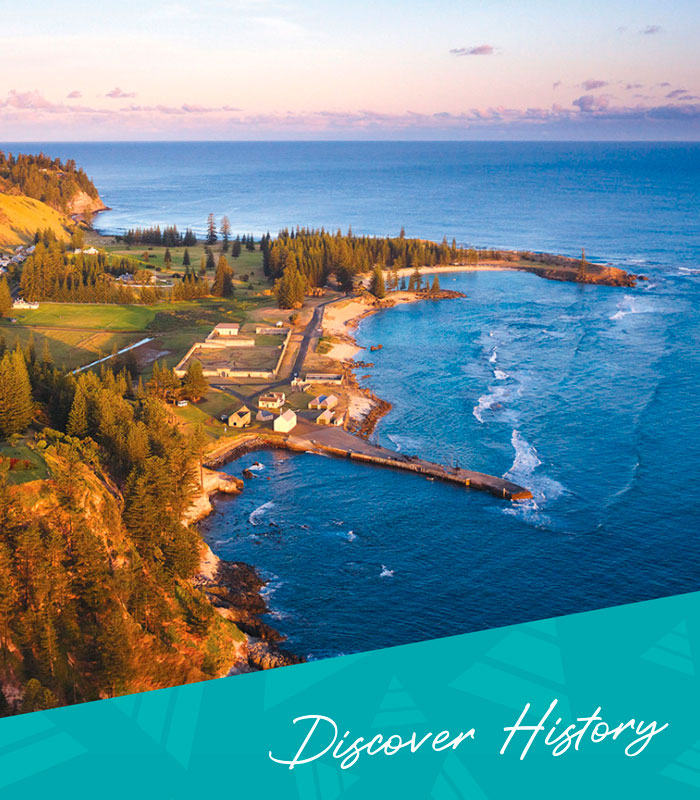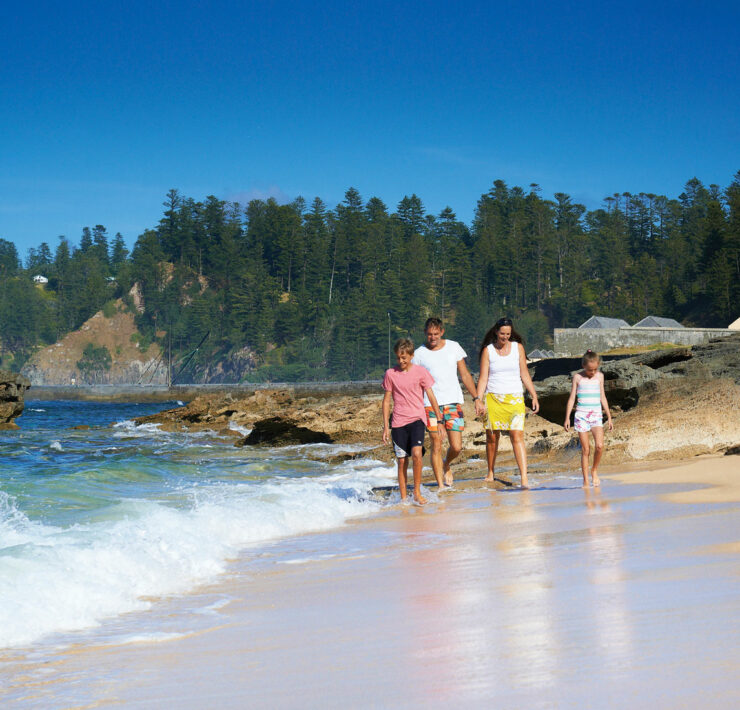Home » All Articles » Ocean Dwellers: Norfolk Island’s Sharks
Ocean Dwellers: Norfolk Island’s Sharks

Shark populations in the South Pacific have always been diverse and plentiful. From the early records of settlers on Norfolk Island there have been extensive sightings of large numbers of shark populations in the surrounding seas.
To Pacific Islanders, the ocean and its inhabitants are highly valued and an integral part their culture. A healthy respect for sharks and all ocean dwelling creatures runs deep. From as far back as the early Polynesian settlement (1300-1500) on Norfolk Island, sharks teeth have been discovered with artefacts found in archaeological diggings.
Despite a global fascination with these ocean dwellers, there has been relatively little research and documentation conducted around the diversity of the species, migration patterns and breeding cycles of sharks in the South Pacific. The South Pacific is home to a mass diversification of marine environments, making it a prime ecosystem for extensive variations of fish and shark populations alike. It is estimated that half of the fish species still existing in the world today are swimming in this great ocean. Loose documentation speculates that the Pacific reefs provide the habitat for over 4,000 species of fish, which is approximately 5 times the diversity of other temperate oceans.
Malcolm Francis from the National Institute of Water and Atmospheric Research in Wellington New Zealand documented that the “range of habitats and water temperatures suggest that the shark fauna (around Norfolk Island) is likely to be relatively diverse… however relatively few shark species have been formally recorded from the Exclusive Economic Zone (EEZ) surrounding Norfolk Island.”
Norfolk Island, in the South Pacific, lies on a 100 km long plateau on the Norfolk Ridge running all the way from New Zealand to New Caledonia. There are no true coral reefs in this zone however just off-shore in the Kingston Area of the Island is a limestone reef with reef-building corals. The Tropical Convergence of the waters surrounding Norfolk Island – warm waters to the north and cool waters coming up from the south – would indicate the possibility of of large migrations of both warm and cool water sharks surrounding the waters of Norfolk Island, at various times of the year.
From the documentation that has been completed, including information provided over the years by local fishermen such as Bob Tofts, we can see a number of regular shark colonies surrounding the Island.
Perhaps the most recognised shark family are the Whaler Sharks (Species Carcharhinus, Family Carcharhinidae). According to Malcolm Francis, this family contains a number of species and are very difficult to distinguish from each other. Common to Norfolk Island is the Galapagos Shark (Carcharhinus galapagensis), also referred to as ‘Bronze Whalers’. There appears to be at least 3 other species from this family noted in the Norfolk Island waters, including the Silky Shark (C. falciformis), the Oceanic White Tip (C.longimanus) and the Blue Shark (Prionace glauca).
The Great White Shark (Carcharodon carcharias) is spotted frequently by fishermen with many examples seen in photographs now readily supplied by local and sport fishermen. The Great White inhabits coastal and offshore waters worldwide, although now with large numbers being tagged and tracked with satellite navigation, it is now known that they are mostly encountered in temperate regions with regular seasonal migrations to subtropical waters, such as Norfolk Island, during autumn and winter.
Tiger Sharks (Galeocerdo cuvier) are frequently caught on Norfolk Island and are found close to the coast in tropical and subtropical waters worldwide occurring in a variety of habitats. It tends to stay in deep waters lining coastal reef areas, indicating why populations are strong in this zone.
The Smooth Hammerhead Shark (Sphyrna zygaena) was recorded in a photograph in 1983 as being caught off Cascade Bay. This variety of shark is common in coastal and offshore zones of tropical and temperate seas world-wide.
Research is underway to formally describe and name the Norfolk Island Gummy Shark (Mustelus n.sp.). This shark appears to closely related to the Gummy Shark (Mustelus antarcticus) from South Australia and the rig or spotted dogfish (Mustelus lenticulatus) from New Zealand. The Norfolk Island Gummy Shark is common over the ‘outer shelf’ surrounding the Island at depths of around 70 to 120m.
The Short Fin Mako Shark (Isurus oxyrinchus) is a popular game fish and despite the commonality of these in habitats similar to Norfolk Island there is no significant documentation indicating that they are common to the area. However, as further research continues to be completed, and as digital and satellite technology allow for greater translation of information, one would assume that recorded incidences of this shark species will increase.
Other sharks noted in Norfolk’s waters include the Bulldog Cat Shark (Apristurus pinguis). The Draughtboard Shark (Cephaloscyllium sp.) also known as ‘Swell Sharks’ have been seen by line fishermen in deeper waters. One of the more frequently caught sharks in recent times has been the Green Eye or Short Spine Dogfish (Squalus griffin) occurring on the outer slopes of the ocean ridge. Additionally, the Thresher Shark (Alopias, sp.) was first sighted by Ivan Tofts south of Phillip Island in the late 1980s, but are now known to be common during the warmer months.
Sharks are fascinating creatures, however accounts of fatal attacks world-wide continue to instil fear and stir feelings of scorn and contempt for creatures who are simply following their natural instincts. Over-fishing of waters globally continues to deplete their food sources, which is understood to be very strong reasoning for higher incidences of attacks in certain areas of the world.
That being said, records that date back to 1892 show that Norfolk Island has had 0 fatal attacks to date. The only alleged incident of an unprovoked attack with a laceration to the arm of a fisherman was in 1892 (Source http://www.sharkattackdata.com).
One would think that the main contributing factor to this incredible figure of zero fatal attacks would stem from the fierce protectionism of the Islanders against the over-fishing of the waters surrounding Norfolk Island and their due diligence of setting and sticking to quotas, as well as the instigating and maintaining full bans during fish spawning seasons.
Many thanks to Bob Tofts for supplying the information for the basis of this article and the imagery. Bob’s book, Shark Tales and Yarns from Norfolk Island is available for sale at stockists island-wide.
____
Image Credit: Royalty Free image
____
Article content disclaimer: Article first published in YourWorld, Volume 06 Issue 02, 2016. Please note that details of specific travel, accommodation and touring options may be outdated. References to people, places and businesses, including operating days and times may be have changed. References to Government structure and Government businesses/entities may no longer be applicable. Please check directly with businesses and/or Government websites directly rather than relying on any information contained in this article before you make travel arrangements.


